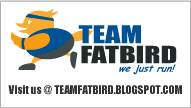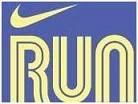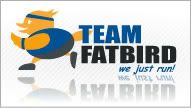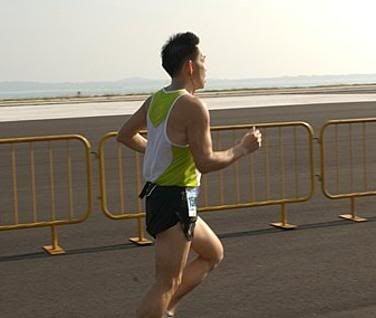-- Extracted From Runners' World Magazine (July2005) --
Stretch it Out - The eight best stretches for runners by: Sharon Stocker
For many of you, stretching is like brushing your teeth. You know it's good for you and you do it regularly, but it's hard to get very excited about it. Most of the time, you just go through the motions. Which is a shame, because stretching-if you do it right-is not only good for your running, it's enjoyable, too. That's right, enjoyable. But only if you focus on the stretches while you're doing them. More on this in a minute.
The question is, what does stretching do for you? It may enhance performance, though that's hard to prove. More importantly, stretching can decrease your injury risk. In a recent study of 200 college athletes from the
"Basically all clinicians working with athletes believe that improving flexibility is a good step toward injury prevention," says Lisa Krivickas, M.D., a physiatrist who led the
Do these stretches in the order they are presented. With each,
carry out the isometric actions described for the full length
of each stretch, breathing evenly through your nose. Hold each
stretch for at least 15 seconds (unless otherwise noted) and repeat all stretches at least two times if possible. If you do them outdoors, keep out of the midday sun. Most of all, let your brain "get quiet," and focus your attention on the place of maximum stretch sensation, using your breath to gently soften and relax any tension. With each stretch, find the optimal balance between effort and ease,just as you would on a run over your favorite course.
Calves
Upper calf: With your hands on a wall, slide your right leg back two or three feet and lean forward onto your left leg, knee bent. To stretch the right calf, straighten the right leg and firmly press the heel onto the floor or ground while letting the hip come forward. Point the toes of your right foot forward, not out to the side. Lower calf: Slide your right foot forward a foot and bend the knee as much as possible while keeping the heel pressed firmly down on the floor. Repeat both stretches with the left leg.
Runner's lunge, for hip flexors
After completing the last stretch, place feet shoulder-width apart, then bend your knees and bring your hands to the floor beside your feet. Take your left foot back until the leg is fully extended straight behind you (your right shin should form a right angle to the floor). Press back through the left heel to stretch the back of the knee. Push up from your fingertips to allow your chest to "open" and face forward. From this right-leg lunge, go to exercise#5, but be sure to come back to a left-leg lunge followed by a final minute or two in the "dog pose" before going on to exercise#6.
Quadriceps
With one hand on the wall for support, use the other to grasp your foot behind you. Keep your standing leg firm (keep the quadriceps taut) and stand up tall. As you draw the heel toward your buttocks, press the bent knee forward without actually letting it move too far in front of the standing leg's knee. Gently tuck your tailbone forward at the same time, which will increase the sensation of lengthening in the quadriceps. Repeat with the other leg.
Knee / iliotibial band
Put your hands on your hips and cross one foot over the other. Tighten your quads, then inhale and stretch your torso up. On an exhalation, bend forward at the hips (not the waist), coming down as far as you can. Rest your hands on the floor or on a support for balance if needed. Once down, "pull" your feet toward each other without actually moving them, to engage the iliotibial band. When you come up, keep your back straight. Repeat with your legs crossed the other way. Lastly, uncross your legs and repeat the forward bend with your feet placed hip-width apart, quads taut. Again, pull feet toward each other without moving them.
Downward facing dog pose
From the lunge, go straight into this all-purpose stretch, which is great for the hamstrings, calves, shoulders and lower back. First, take your right foot back and place it next to your left foot. Place your feet hip-width apart and your hands shoulder-width apart on the floor. Bend your knees and lift your buttocks up high so that your pelvis tilts, making the lower-back arch.
Next, press down firmly with your hands (particularly the inner edges from the base of the index fingers to the thumbs) and visualize your spine and torso lengthening. Slowly straighten your legs, keeping the buttocks high while lowering your inner heels toward the ground (they don't have to touch the ground). Release your neck and let your head hang freely. Breathe evenly while keeping this pose for 1 to 2 minutes. Finish by lowering your knees to the floor and sitting back on your heels.
Hamstrings
While lying on your back, draw your left knee into your chest. Clasp your hands around the back of your thigh and press your thigh into your hands. Keeping the thigh taut, slowly extend your left foot to the ceiling until your leg is straight. Press your heel to the ceiling (point with the heel, not the toes). Keep the right leg extended, with the right thigh pressing down and toes pointing up throughout the stretch. Switch legs and repeat. Variation: Do this stretch with a strap or jumprope around your raised foot, which makes it easier to keep the leg fully extended.
Thread the needle / the piriformis
For a great piriformis (outer hip) stretch, lie on your back, bend your knees and bring your feet to the floor near your buttocks. Place the outer edge of your left foot on your right thigh near the knee. (Let your foot cross beyond the thigh if you're tight.) Wrap your hands around the right thigh or shin and draw it toward your chest. Keep your head relaxed on the ground, or support it with a towel. For a deeper stretch, gently press your buttocks downward until your lower back arches slightly. Switch legs to stretch the right hip.
Legs up the wall
Elevating your legs is one of the quickest ways to rid them of fatigue. To get into position, extend your legs up the wall and let the full weight of your back release down into the floor. Get your buttocks as close to the wall as possible, backing away until your lower back is fully supported on the floor. Close your eyes and breathe quietly for up to 5 minutes. This position will gently stretch the hamstrings and lower back, and it's a restful way to end your routine.















0 Comments:
Post a Comment
<< Home